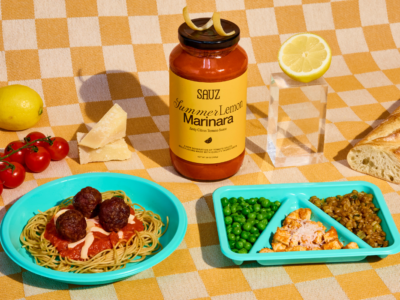Whether we are aware of it or not, diet culture is pervasive and very often trickles down into the way we talk to our kids about food. This is not to say we mean for that to happen! No parent or caregiver wants their kid to have a poor or fraught relationship with food, but we have to be aware of the way in which diet culture has affected us, and make a concerted effort to promote positive, healthy relationships with food when talking to and feeding our little ones. Sometimes this effort happens at the dinner table, and sometimes it happens outside of meal and snack times.
Here are a few Do’s and Don’t to keep in mind when thinking about promoting a healthy relationship between your kiddo and food. This list is of course not exhaustive but it’s a great place to start! And remember, while this all applies on day one of eating for your kiddos, it’s never too late to incorporate these practices.
DOs:
Bring your kids food shopping with you.
Take them to the farmers’ market or grocery store (safely) and ask for their input (“Should we get asparagus or carrots to have with our chicken tonight?”). Let them carry their favorite ingredients (my toddler once carried around an avocado for an entire afternoon) or push their own kid cart!
Involve them in meal preparation.
A toddler in the kitchen may not be the most helpful sous chef, but it’s a great way to get them to explore food while also building skills and having fun. When my daughter was about 18 months old I’d set her up on her toddler tower and have her transfer an ingredient from one container to another with a fork or spoon to practice her motor skills. Bonus: it kept her busy while I was making dinner. Let your kids count items, sprinkle, mix, and chop (with a kid safe knife, when age-appropriate) to their heart’s content!
Eat meals as a family.
Eating meals as a family provides the opportunity to model balanced eating habits, and slow down and connect with our children during our busy lives. Research has shown that kids who eat more meals with their families tend to have more desirable eating behaviors (kids are more likely to try foods they see you eating!), higher self esteem and lower risk for future eating disorders. Of course, eating every meal with your kids is not realistic, but try to make it happen when the timing allows.
Make mealtime fun!
Play music, sing, and dance while you eat. I have a go-to playlist that always brightens the mood and takes the focus off the food itself.
Ask your young child descriptive questions about what they’re eating.
Incorporate questions like “Is your apple crunchy? Is it juicy? Is it sweet or tart? What color is your apple?” into mealtime. This is a great way to get them thinking about food—and expanding their vocabularies—outside the lens of good/bad or like/dislike.
Serve dessert foods in age-appropriate portions.
The AAP recommends no added sugar before age 2 to reduce the risk of displacing crucial nutrients for growth. However, some parents may feel comfortable introducing dessert foods sporadically before this age; it all depends on your personal eating habits and parenting philosophy. The work of taking sweets off a pedestal starts early—when we treat dessert like any other food, there is no need to avoid them. Don’t worry if your kids go bonkers for them either—this is so normal. Keep regularly offering desserts in age-appropriate portions and not as a reward.
Incorporate foods in play outside of mealtime.
Whether it’s sensory play with puréed fruit “paint,” imaginative play at your child’s “restaurant,” or reading Cloudy With A Chance of Meatballs, involving foods in play outside the family table goes a long way in promoting healthy food relationships.
DONTs:
Label foods “good” or “bad”
Separate whatever moral judgments you might have (or even your personal likes and dislikes) when discussing food with your children. Food is food. When they’re older and have more of an understanding of basic biology, you can talk about how some foods (like fruits and veggies) do more things for our bodies and some do less things (like candy). In the early years, try to refrain from labeling your kids’ foods.
Put pressure on your child to eat certain things.
You might think of pressure as direct (“Here, try the pasta I made you.”) but it can also be indirect (“hmm I guess mommy will have to eat all your avocado then.”) or even punitive (“If you don’t eat your peas, you can’t have iPad time tonight.”). My favorite phrases to use at meal time to reduce pressure are “You don’t have to eat anything you don’t want” and “You know your body best.”
Comment on how much or little your child eats of an ingredient or meal.
Healthy children are natural born intuitive eaters, and their appetites may fluctuate from meal to meal (I say healthy because some kids have certain underlying medical conditions that may impact their appetite and growth). Teach your kids how to tell you when they are finished (even if that means they took only one bite) and respect that they know when their bodies are full.
Incorporating these strategies might feel unnatural at first; we have been shaped by diet culture in sneaky and subtle ways. There’s no need to do every single one of these things all the time—we’re all doing the best we can. But be patient, and you will see it pay off over time in your kids’ eating habits and attitudes. You might even notice an improvement in your own relationship with food!



